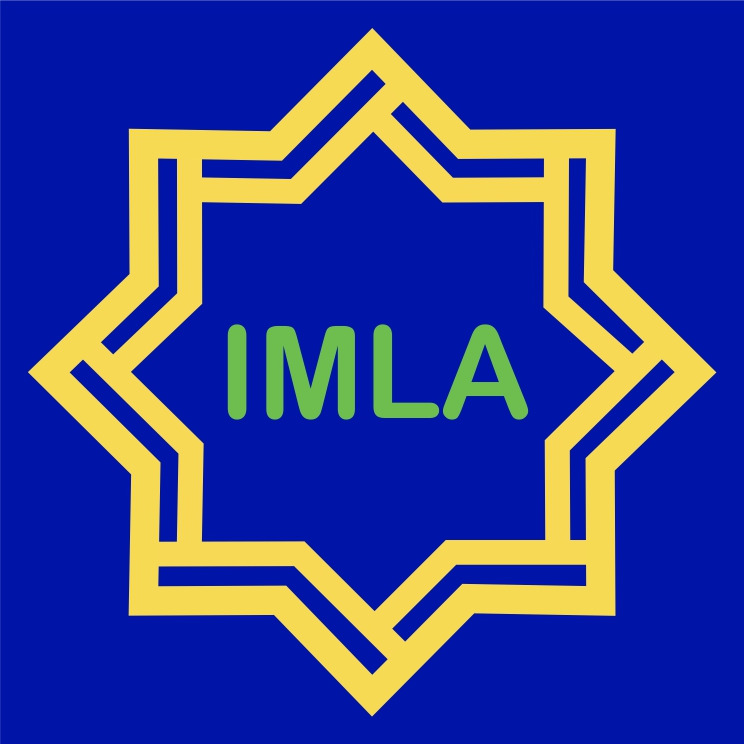al-Daurah al-Mukatsafah: al-Barnamij al-Badil Li Ta’lim Maharah al-Kalam wa al-Qira’ah Fi al-Ma’had
DOI:
https://doi.org/10.29240/jba.v5i1.2306Keywords:
Arabic, learning, reading skill, speaking skillAbstract
This paper aims to explore an Intensive Course Program in Arabic learning at one of the Islamic Boarding schools for girls in Indonesia. it is expected that Students in this Intensive Course understand two skills in Arabic, namely speaking and reading skills. Also, it aims to identify the strengths and weaknesses of Intensive Course Program. This study utilized a descriptive qualitative approach with three data collection techniques; observation, interviews, and documentation. It used Miles and Huberman’s technique in analyzing the data. This study showed that: 1) Implementation of Intensive Course Program in Arabic learning at the one of Islamic Boarding Schools for girls in Indonesia aimed to improve language skill including reading and deductive skill including speaking. 2) Pertinent to the strengths and weaknesses of the Intensive Course, the learning system is advantagous to enhance other specific skills, ranging from students’ proficiencies in reading and speaking in Arabic. However, there are also drawbacks. For example, an excellent Arabic environment has not been created due to the lack of students’ awareness of making them accustomed to speaking Arabic.
Downloads
References
Akmalia, Frida, dan Syihabuddin. “Taqwîm Al BarnÄmij Al Mukatstsaf Lita’lîm Al Lughah Al ’Arabiyyah Fî Al Madrasah Al Mutawassitah Al IslÄmiyyah Al HukÅ«miyyah Al TsÄniyah Kediri.†Al Mi’yar: Jurnal Ilmiah Pembelajaran Bahasa Arab Dan Kebahasaaraban 3, no. 2 (2020): 251–66. https://doi.org/ttp://dx.doi.org/10.35931/am.v3i2.345.
Athiyah, Muhsin Ali. Mahaarotu Al-Ittishooli Al-Lughowiyyi Wa Ta'liimuha. 'Ammaan: Daaru Al-Manaahij, 2007.
Bisri Ihwan, Dkk. “Intensive Arabic Language Teaching to Acquire the Four Linguistic Skills.†Al-Bayan: Jurnal Jurusan Pendidikan Bahasa Arab 12, no. 2 (2020): 281–300. https://doi.org/10.24042/albayan.v%vi%i.6329.
Blignault I, Saab H, Woodland L, Comino E. "Evaluation of the acceptability and clinical utility of an Arabic-language mindfulness CD in an Australian community setting." Transcultural Psychiatry. 56, no. 3 (2019):552-568. http://dx.doi.org/10.1177/1363461519825880
Brosh, Hezi Y. “Arabic Language-Learning Strategy Preferences Among Undergraduate Students.†Studies In Second Language Learning And Teaching IX, no. 3 (2019): 352.
Djiwandono, Soenardi. Tes Bahasa Dalam Pengajaran. Edited by Penerbit ITB. Bandung, 1996.
Fakhruddin, Amir. Thuruqu Al-Tadriisi Al-Khoshshoh Bi Al-Lughoti Al-'Araabiyyah Al-Islaamiyyati. Jaami'atu Al-Faanj: Daaru Al-Kutubi Al-Wathoniyyah, 1996.
Hadi, Nur. Al-Muwajjah Li Ta’liim Al-Mahaaroti Al-Lughowiyyati Lighoiri Al-Naathiqiina Biha. Maalanj: Mathba’atu Jaami’ati Maulana Malik Ibrahim Al-Islaamiyyati Al-Hukuumiyyati Bi Maalanj, 2011.
Halimah, ’Aqif. "Ta'liimu Mahaaroti Al-Qiroo'ah Li Al-Naathiqiin Bighoirihaa". Lisanuna: Jurnal Ilmu Bahasa Arab Dan Pembelajarannya 9, no. 2 (2019): 249–59. http://dx.doi.org/10.22373/ls.v9i2.6744.
Hamalik, Oemar. Proses Belajar Mengajar. Jakarta: Bumi Aksara, 2001.
Harman, Naashif Wa ghoiruhu, Al-Lughootu Al-Ajnaabiyyatu: Tadriisuha Wa Ta'allumuhaa. Kuwait: Al-Majlisu Al-Wathoniyyu Li Al-Tsaqoofati Wa Al-Funuuni Wa Al-Adabi, 1988.
Isani MA. "Methodological Problems of Using Arabic-Language Twitter as a Gauge for Arab Attitudes Toward Politics and Society". Contemporary Review of the Middle East 8, no. 1 (2021):22-35. https://doi.org/10.1177/2347798920976283.
Kholish, Ahmad Nur. “Tathbiqu Idaroh Al-Barnamij Al-Mukatstsaf Al-'Arobiy fi Jami'ah Tulungagung Al-Islamiyyah Al-Hukumiyyahâ€. Jurnal Pendidikan Islam 1, no. 2 (2014): 281–298, https://doi.org/https://doi.org/10.15575/jpi.v1i2.676.
Makruf, Imam. “Pemanfaatan Teknologi Informasi Dan Komunikasi Dalam Pembelajaran Bahasa Arab Di Madrasah Aliyah Kabupaten Sukoharjo.†Arabi: Journal of Arabic Studies 5, no. 1 (2020): 79–90. https://doi.org/10.24865/ajas.v5i1.93.
Maujud, Fathul. "Diroosatu 'An Takhthiiti Tadriisi Al-Lughoti Al-'Aroobiyyati Fi Al-Jaami'ati Al-Islaamiyyati". At-Ta’dib 12, no. 1 (2017): 111–42. https:http://dx.doi.org/10.21111/at-tadib.v12i1.907.
Mustofa, Saiful. "Ta'tsiiru Istikhdaami Wasiilati Al-Ta'liim Lu'bah Dumyatu Al-Ashoobi' Li Tarqiyyati Mahaaroti Al-Kalaam". Arabia: Jurnal Pendidikan Bahasa Arab 9, no. 2 (2017): 179–96. http://dx.doi.org/10.21043/arabia.v9i2.5895.
Pereira N, Bakhiet SF, Gentry M, Balhmar TA, Hakami SM. "Sudanese Students’ Perceptions of Their Class Activities: Psychometric Properties and Measurement Invariance of My Class Activities–Arabic Language Version." Journal of Advanced Academics 28, no. 2 (2017):141-159. https://doi.org/10.1177/1932202X17701881.
Shollah, Abdul Majid Al' Arabiy. Ta'liimu Al-lughooti Al-Hayyati Wa Tadriisuha Baina Al-Nadzriyyah Wa Al-Tathbiiqi. Bairut: Maktabah Libanaan, 1981.
Speaker RB Thomure HT, “Arabic Language Arts Standards: Revolution or Disruption?,†Research in Comparative and International Education 13, no. 4 (2018): 551–69. http://dx.doi.org/10.1177/1745499918807032.
Sugiyono. Metode Penelitian Kombinasi (Mixed Methods). Bandung: Alfabeta, 2012.
Supriyanto, Stefanus. Damayanti Nyoman Anita. Perencanaan dan Evaluasi. Surabaya: Airlangga University Press, 2007.
Tayyara A El-Rahman, “The Practicability of Proverbs in Teaching Arabic Language and Culture,†Language Teaching Research, (2020). https://doi.org/10.1177/1362168819895253.
Versteegh, Kees. “Learning Arabic In The Islamic World.†The Foundations Of Arabic Linguistics Iii 12, no. 2 (2018): 281–300. https://doi.org/10.24042/albayan.v%vi%i.6329.
Warnis Warnis, Hetti Waluati Triana, Martin Kustati, Remiswal Remiswal, Nelmawarni Nelmawarni. “Arabic Language as the Icon of Islamic Higher Education: A Study of the Implementation of Arabic Intensive Program.†Tarbiya: Journal Of Education In Muslim Society 6, no. 1 (2019): 102–15. https://doi.org/https://doi.org/10.15408/tjems.v6i1.10910.
Yoke dan Ibnu. “Taá¹bÄ«q Al-Manhaj Al-DirÄsi Fi Ta’lÄ«m Al-Lugah Al-Arabiyyah Li Al-Daurah Al-Mukaṡṡaf Bi Markaz Al-DaurÄt Wa Al-TadribÄt JÄmi’ah DÄr Al-Salam Gontor.†Alsinatuna: Journal of Arabic Linguistics and Education 5, no. 2 (2019): 11–24. https://doi.org/http://dx.doi.org/10.21111/lisanudhad.v1i2.451.
Zulhannan. “Musahamah Al-’Ulama Al-Indonesiyyin Fi Tatwir Al-Lughah Al-’Arabiyyah.†Jurnal Al-Bayan: Jurnal Jurusan Pendidikan Bahasa Arab 9, no. 1 (2017): 70. https://doi.org/https://doi.org/10.24042/albayan.v9i1.1095.
Downloads
Published
How to Cite
Issue
Section
Citation Check
License
Authors who publish with Arabiyatuna: Jurnal Bahasa Arab agree to the following terms:- Authors retain copyright and grant the journal right of first publication with the work simultaneously licensed under a Creative Commons Attribution-NonCommercial-ShareAlike 4.0 International License (CC BY-NC-SA 4.0) that allows others to share the work with an acknowledgment of the work's authorship and initial publication in this journal.
- Authors are able to enter into separate, additional contractual arrangements for the non-exclusive distribution of the journal's published version of the work (e.g., post it to an institutional repository or publish it in a book), with an acknowledgment of its initial publication in this journal.
- Authors are permitted and encouraged to post their work online (e.g., in institutional repositories or on their website) prior to and during the submission process, as it can lead to productive exchanges, as well as earlier and greater citation of published work (See The Effect of Open Access).














 This work is licensed under a
This work is licensed under a 